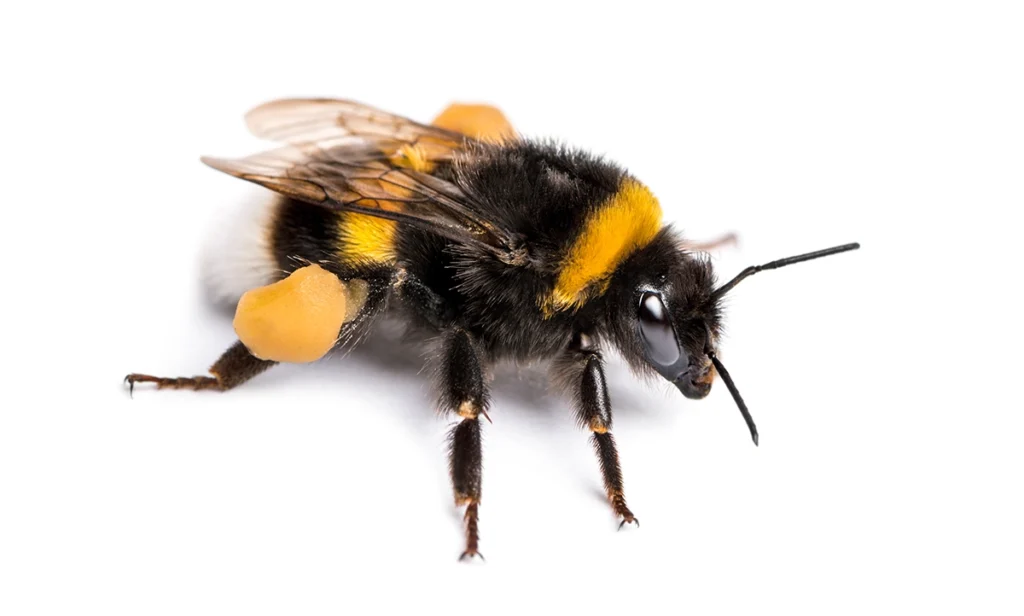Bumblebees
(Bombus)
Bumblebees are fascinating insects belonging to the genus Bombus, which is part of the larger bee family, Apidae. Known for their distinctive appearance and important role as pollinators, bumblebees play a crucial role in maintaining ecosystems and supporting agricultural productivity. This article will provide an overview of bumblebees, their characteristics, importance, and conservation efforts.
Characteristics and Behavior
Bumblebees are robust insects with a hairy body, enabling them to carry and transfer large amounts of pollen. They are larger in size compared to honeybees or other solitary bees, typically ranging between 0.39-1.18 inches (1-3 centimeters) in length.
Most bumblebees have black and yellow or black and orange bands on their body, serving as a natural warning to predators.
Similar to other bee species, bumblebees live in colonies led by a queen. The queen is responsible for establishing and maintaining a nest, where the colony resides. Nests are typically built underground or in cavities, such as abandoned rodent burrows.
Bumblebees are known to be excellent pollinators due to their ability to visit a wide variety of flowers, including those with complex structures that other insects may struggle with.
Importance of Bumblebees
Bumblebees, like other pollinators, play a vital role in the reproduction of flowering plants and the production of fruits, vegetables, and seeds. They contribute to the biodiversity of ecosystems by promoting the growth of diverse plant species. According to the Xerces Society for Invertebrate Conservation, bumblebees are particularly effective at pollinating tomatoes, peppers, blueberries, and cranberries.
In agriculture, bumblebees are increasingly recognized for their ability to pollinate a wide range of crops, enhancing yields and quality. Studies have shown that bumblebee pollination can increase fruit set and size, resulting in higher crop production. For example, research conducted in California’s almond orchards demonstrated that proper bumblebee pollination can significantly improve almond nut quality and yield.
Moreover, bumblebees are vital for sustaining natural ecosystems and supporting the survival of other pollinator-dependent species. They contribute to the maintenance of plant communities and the provision of food sources for various wildlife. By fostering biodiversity, bumblebees play a crucial role in maintaining the overall health and resilience of ecosystems.
Conservation Efforts
Despite their ecological significance, bumblebees face numerous challenges, including habitat loss, climate change, pesticide exposure, and diseases. Several bumblebee species are currently experiencing population declines, with some even facing the risk of extinction.
To ensure the conservation of bumblebees and their valuable ecosystem services, various conservation strategies have been implemented. These include:
- Protecting and restoring bumblebee habitats by preserving natural areas and creating pollinator-friendly landscapes in both rural and urban environments.
- Reducing or eliminating the use of pesticides, particularly neonicotinoids, which have been linked to negative impacts on bumblebee health and reproduction.
- Raising public awareness about the importance of pollinators and the ways individuals can contribute to their conservation, such as planting native flowering plants and providing nesting sites.
It is crucial for individuals, businesses, and governments to work together in conserving bumblebees and ensuring their survival, as their decline could have far-reaching consequences for ecosystems and food security.
Conclusion
Bumblebees are remarkable insects known for their vital role as pollinators. Their ability to visit a wide range of flowers and efficiently transfer pollen makes them essential contributors to ecosystems and agricultural productivity. However, bumblebees face various challenges and require conservation efforts to protect their populations and preserve their invaluable services.
By understanding the characteristics and importance of bumblebees, it is our collective responsibility to promote their conservation. Protecting their habitats, reducing pesticide use, and raising awareness about their significance can contribute to ensuring the survival of these extraordinary creatures.








